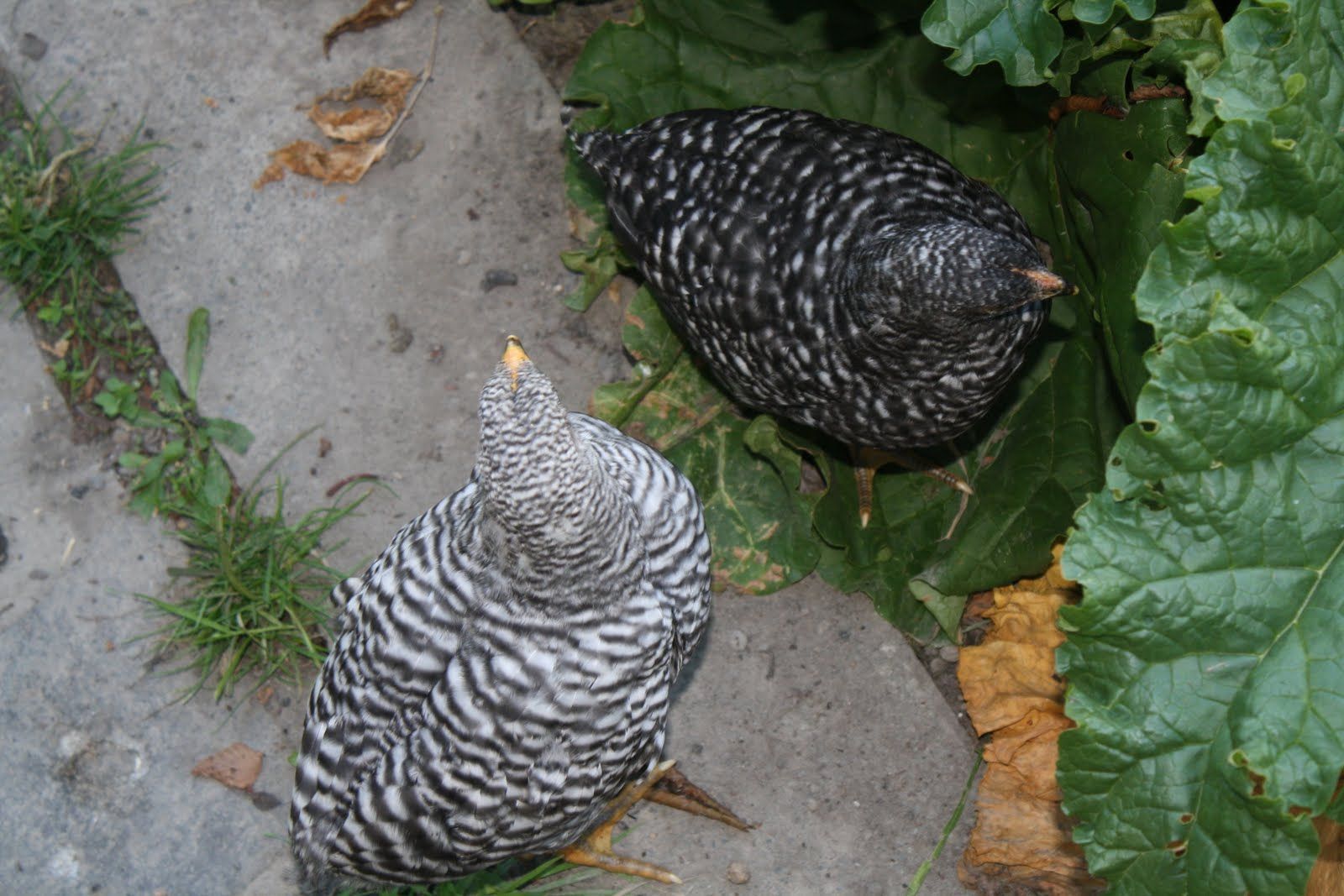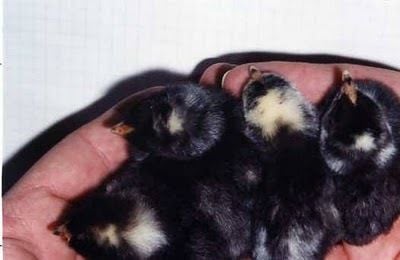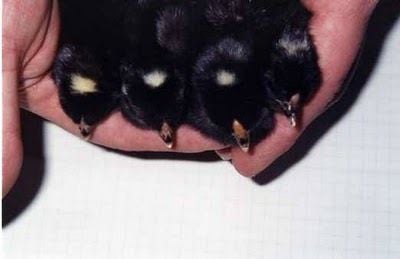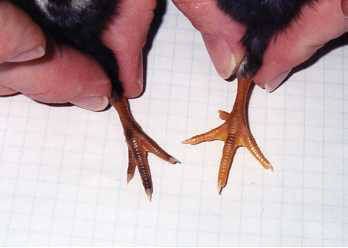I notice a lot of misconceptions about sexing Barred Plymouth Rocks, and I wanted to make a post on just that. They can be sexed at hatch by a combination of down colour, head spot, and leg pigment.
It's not just one of these things, but a combination of them. However, once chicks are feathered out they are relatively easy to sex based on overall colour unless you have the Stukel or Good Shepherd line of Barred Plymouth Rocks (you most likely do not have this line, so these tips are valid for you).
Example of fully feathered colour difference before any other sex characteristics are shown:

Photo Credit
Pullets are overall darker than Cockerels due to having only one copy of the barring gene. Cockerels have two copies and this provides them with more white in between the black bars, giving them the appearance of being a shade lighter.
Hens pass down a copy of the barring gene to their son ONLY. The Cock passes down a gene to both his sons, and his daughters.
Let's give you some pointers on sexing these chicks once they are hatched and dried off. I came across a really helpful article dated February 1941 - so this is not a new trick. It is tried and true. I have successfully sexed my chicks based on this method:

Examples above are different male head spots

Above are examples of different types of female head spots.
See bellow pictures of day olds in colour.

Above Males

Above Females

Leg pigment colour difference: Females darker, males lighter
Now take into consideration that this works best for common Barred Plymouth Rocks. Exhibition Rocks are much trickier to sex at hatch.
It's not about the SIZE of the head spot, but rather the definition of the head dot.
An example of one of my MALE chicks at hatch. Small head dot, but not defined. Half circle of cream was visible on head.

It's not just one of these things, but a combination of them. However, once chicks are feathered out they are relatively easy to sex based on overall colour unless you have the Stukel or Good Shepherd line of Barred Plymouth Rocks (you most likely do not have this line, so these tips are valid for you).
Example of fully feathered colour difference before any other sex characteristics are shown:

Photo Credit
Pullets are overall darker than Cockerels due to having only one copy of the barring gene. Cockerels have two copies and this provides them with more white in between the black bars, giving them the appearance of being a shade lighter.
Hens pass down a copy of the barring gene to their son ONLY. The Cock passes down a gene to both his sons, and his daughters.
Let's give you some pointers on sexing these chicks once they are hatched and dried off. I came across a really helpful article dated February 1941 - so this is not a new trick. It is tried and true. I have successfully sexed my chicks based on this method:
Examples above are different male head spots
Above are examples of different types of female head spots.
See bellow pictures of day olds in colour.

Above Males

Above Females

Leg pigment colour difference: Females darker, males lighter
Now take into consideration that this works best for common Barred Plymouth Rocks. Exhibition Rocks are much trickier to sex at hatch.
It's not about the SIZE of the head spot, but rather the definition of the head dot.
An example of one of my MALE chicks at hatch. Small head dot, but not defined. Half circle of cream was visible on head.




